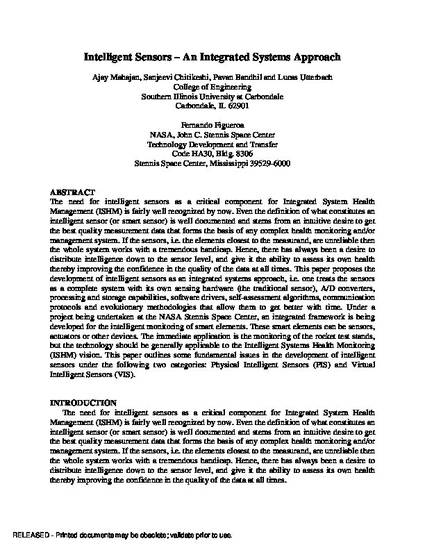
The need for intelligent sensors as a critical component for Integrated System Health Management (ISHM) is fairly well recognized by now. Even the definition of what constitutes an intelligent sensor (or smart sensor) is well documented and stems from an intuitive desire to get the best quality measurement data that forms the basis of any complex health monitoring and/or management system. If the sensors, i.e. the elements closest to the measurand, are unreliable then the whole system works with a tremendous handicap. Hence, there has always been a desire to distribute intelligence down to the sensor level, and give it the ability to assess its own health thereby improving the confidence in the quality of the data at all times. This paper proposes the development of intelligent sensors as an integrated systems approach, i.e. one treats the sensors as a complete system with its own sensing hardware (the traditional sensor), A/D converters, processing and storage capabilities, software drivers, self-assessment algorithms, communication protocols and evolutionary methodologies that allow them to get better with time. Under a project being undertaken at the NASA Stennis Space Center, an integrated framework is being developed for the intelligent monitoring of smart elements. These smart elements can be sensors, actuators or other devices. The immediate application is the monitoring of the rocket test stands, but the technology should be generally applicable to the Intelligent Systems Health Monitoring (ISHM) vision. This paper outlines some fundamental issues in the development of intelligent sensors under the following two categories: Physical Intelligent Sensors (PIS) and Virtual Intelligent Sensors (VIS).
Available at: http://works.bepress.com/ajay_mahajan/24/
